|
Springtime in the northern woods is amazing. I hope a lot more folks are getting to enjoy it as the world slows down and we try to stay distanced. In Vermont, the spring ephemeral wildflowers are simple joy embodied, along with birdsong, glowing green moss and hints of tree leaves popping out. This is also the best time of year to forage windfallen lichens for dyeing, after winter storms and ice have dislodged many from the surfaces they cling to. As I go on long wanders in my surrounding woods, I’ve been picking up bits of Parmelia sulcata and Hypogymnia physodes to mix together in a dyebath. These “boiling water lichens” or “crottles” in their Scottish vernacular, dye lovely rusty browns and golden oranges when extracted with simmering water, but you need a very high ratio of lichen to fiber to get the richest colors. I haven’t used them much because of the difficulty of sustainably gathering the quantities needed to dye enough yarn for a project. Both slow growing lichens like to live up in the forest canopy, P. sulcata seems to like deciduous trees more and H. physodes especially likes to live on the upper reaches of pine trees. Every wind storm brings a bit down, usually still attached to twigs or a peeled off section of bark. Separated from its woody substrate a lichen will succumb to the rot of the forest floor. This is the stuff that it is most ethical to collect for dye. Bit by bit. A couple weeks ago I came across a huge hulk of a white pine that had fallen in a recent windstorm. The entire tree and all of its resident lichen was right here at waist level in front of me. An incredible gift. Still attached to the tree, the lichen colonies might survive a while, but pretty soon the tree will start to break down and all of it will turn into beautiful rich humus. I accepted the tree’s gift of lichen, and came back the next day with a basket to collect it in. Even with taking less than half of the easily reachable lichen, I was able to get enough in this one place to dye a small skein of yarn. There is an area of woods that I’ve been avoiding lately because the landowner is having it logged. It’s land that I know like the back of my hand. I know where the mushrooms grow; I know where the bears hang out; I know where all the seasonal streams flow to and from. Especially, I know the absolute peace of the dark, quiet hemlock and pine stands. The logging breaks my heart and makes me feel utterly helpless. I can hear it from my house: chainsaws, bulldozers, skidders, and the crashing of trees. I see those hemlocks and pines, cut into 8 foot logs, and taken out past my house on log trucks, every day. Like almost everything in our overused world, logging is complicated and controversial. The old jobs and profit versus the environment war. There are ways of logging well, with a longterm outlook, and with a level of care for the land. By most standards, this is a messy logging job, with not much regard for best practices, but it is on private land and there isn't much a complaining neighbor can do. So I try to hold my pain for this forest and my lost experience of it, along with the knowledge that time heals, and gratitude for so much other nearby land being conserved and managed with greater sensitivity. With my basket of gift lichen, I decided to venture across into the logged area. It was a drizzly morning and the loggers weren’t working yet. It was hard to get my bearings in the unrecognizable former conifer woods that is now mud and piles of tree tops. A pine tree caught my eye: it had been cut down, but not limbed and cut up into log lengths yet. It was about the same size as the naturally fallen one I had just collected lichen from, and it was also encrusted with multitudes of lichens. Instead of sensing the presentation of a gift, all my grief for this logging spilled out in tears. I stood by that felled pine for a while, and then decided to add its lichens to my basket as well. This is the mess we live with. This too is something we are required to be present to. Back home, I put the gifted and salvaged lichen together in a dye pot, and put my yarn in there with them. It’s interesting that the theme of messiness keeps growing, as the best colors from these crottles are achieved when the yarn and the dye stuffs mingle in the pot together, instead of the usual two-step process of extracting the dye and straining out the spent plant material before putting the yarn in. The smell of lichen cooking is divine — a mix of earth, tree and spice that stays in yarn forever. The pot simmered on my wood stove on and off for a few days. After the first skein of yarn had taken on a nice color, I added a second small skein and some more fresh lichen. After everything had cooled down, I strained off the remaining dye liquid and put a last skein in it to steep for another day, using up every last bit of the lichen goodness. Messiness requires extra attention to pick apart. Shaking and picking out the bits of lichen from the yarn took a while, and the yarn did get fuzzed up from the extra abrasion in the pot.
Scars of a process. Added character. Memories of origins. A rich color and texture that tells the messy stories of the land.
1 Comment
Jen Hughs
11/28/2022 09:05:58 am
As cold weather brings heat from the woodstove, I start a soak and simmer cycle that goes for days to get that rich caramel color. I love the smell, and glad to know about its insect repelling properties. Hypogymnia alone gives me a buttery yellow, and these rich golden hues come from parmelia sulcata and flavoparmelia caperata, common in my southern Vermont woods. I think I’ll dye unspun wool this year, as I’ve gotten into hand-spinning. The bits of lichen fall away nicely when it’s fully dry and dyeing with contact is essential, as you demonstrated so nicely. Thanks for sharing your beautiful messiness:)
Reply
Your comment will be posted after it is approved.
Leave a Reply. |
AuthorHannah Regier Archives
May 2023
Categories
All
|

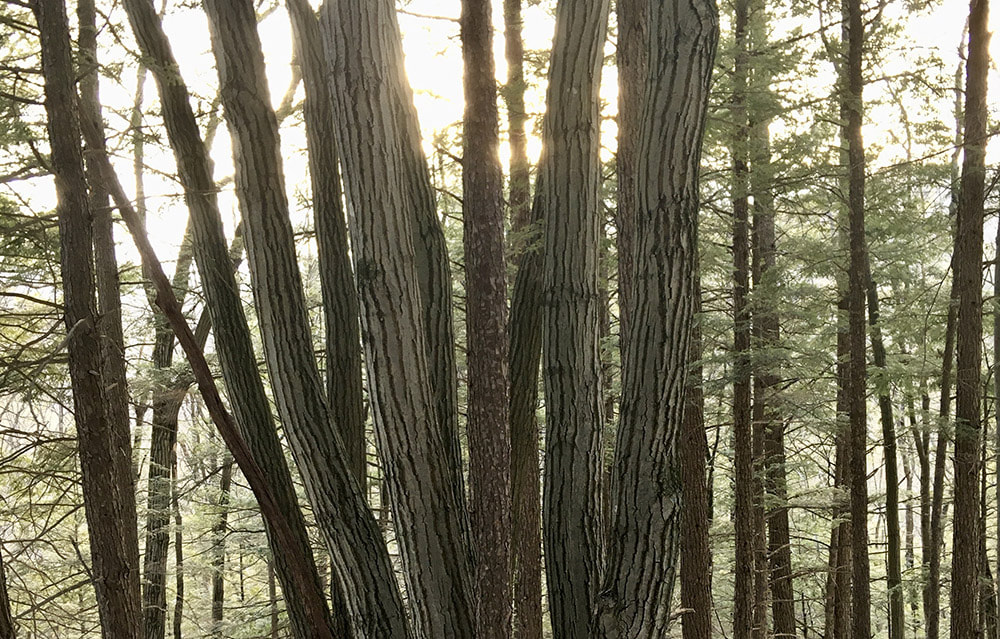

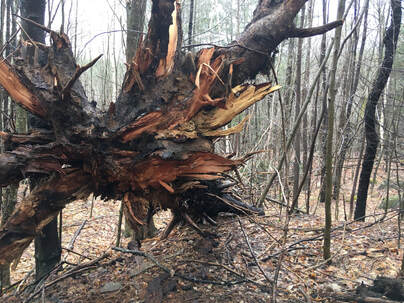


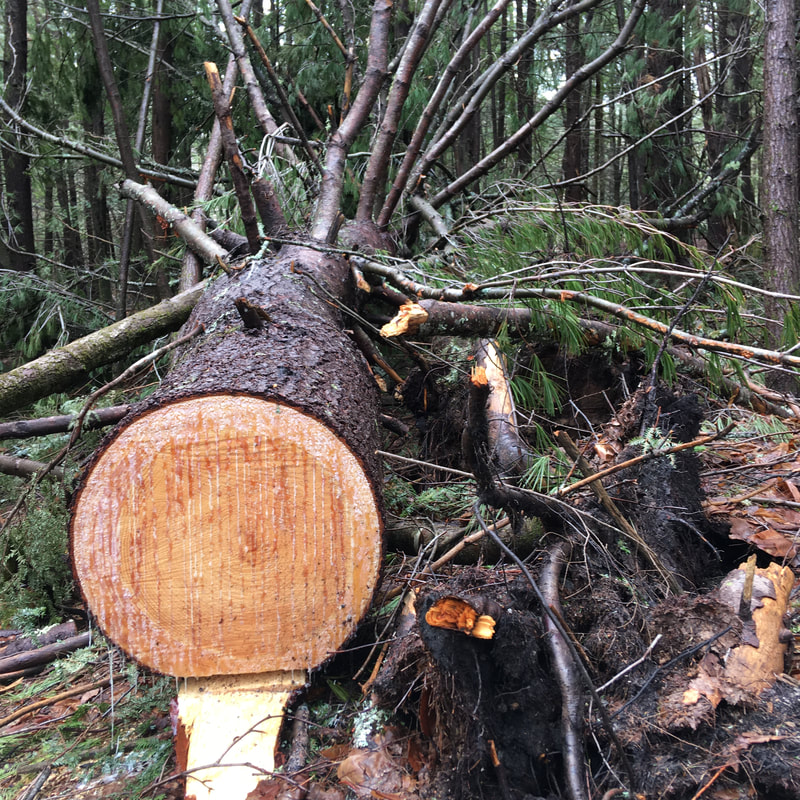
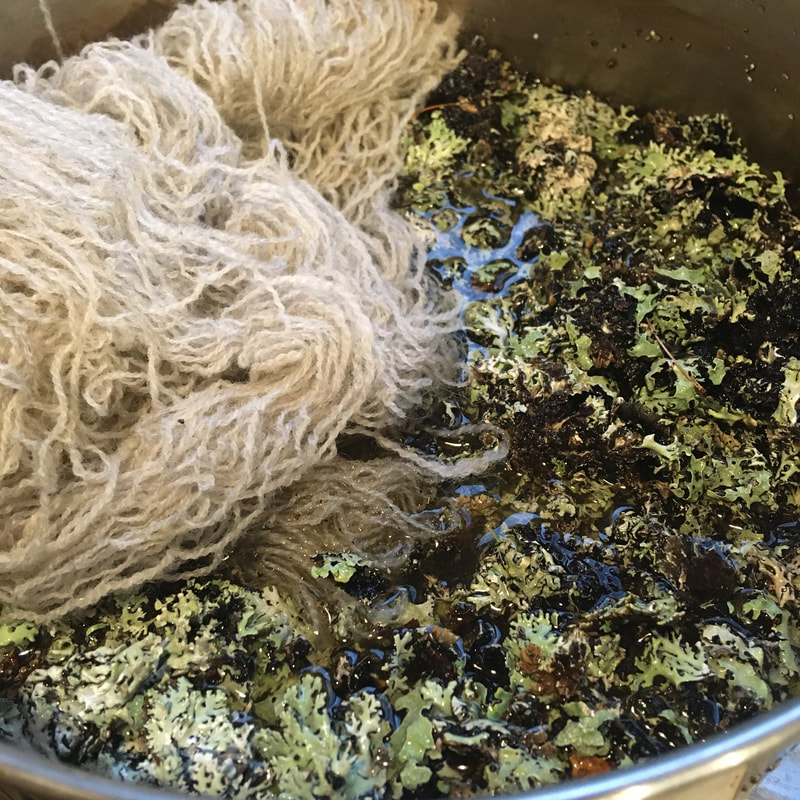

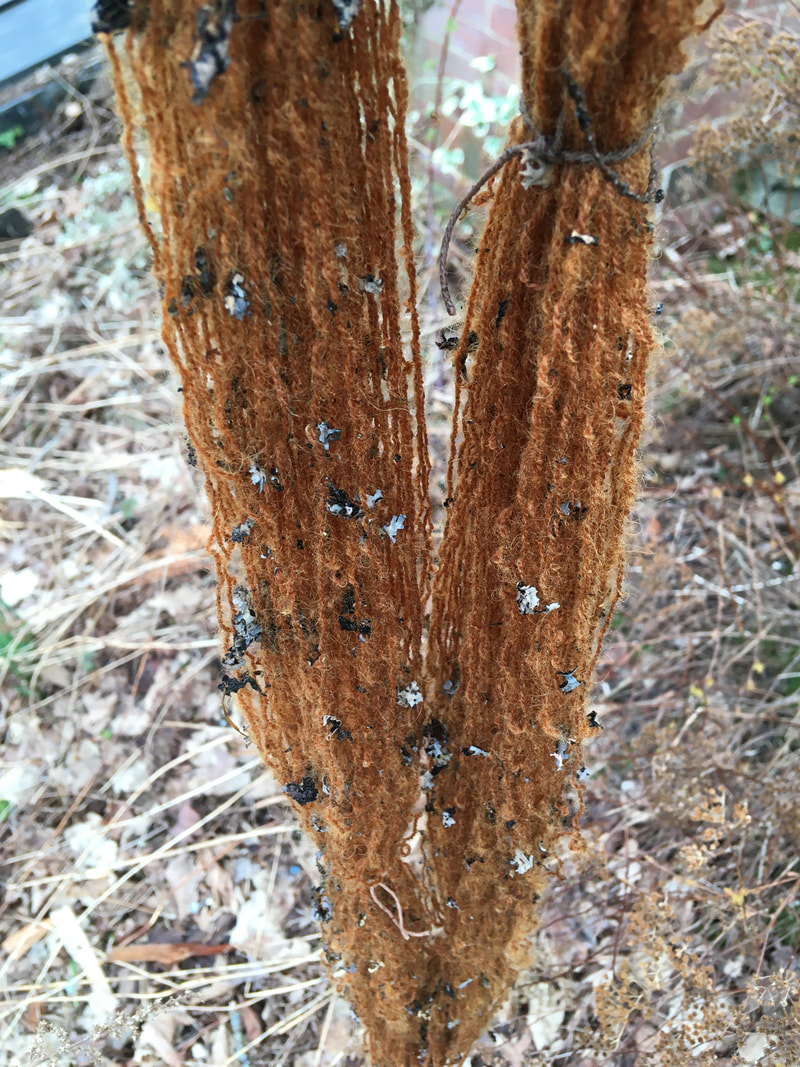

 RSS Feed
RSS Feed